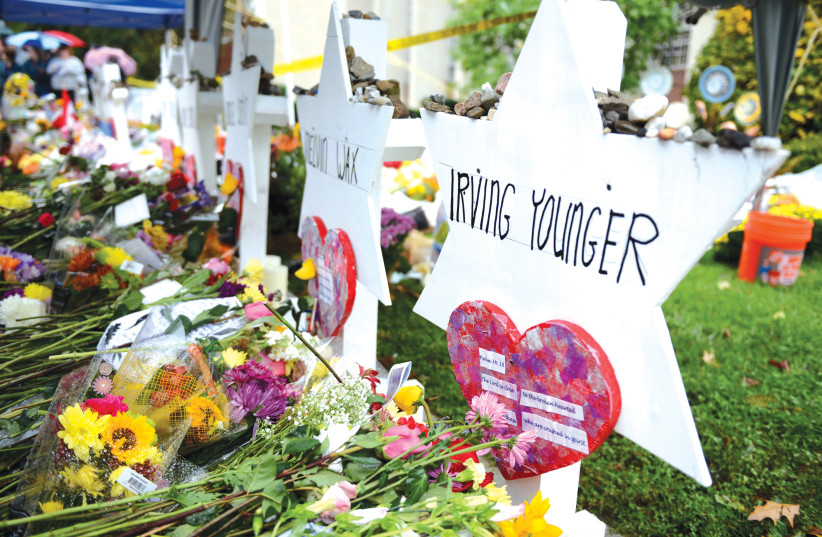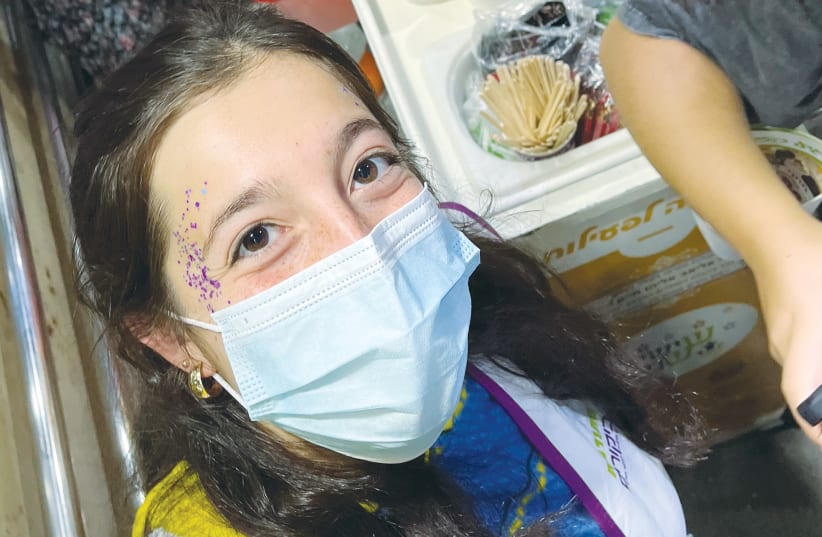Before traveling to Israel for five weeks of volunteering, I was told to pack a costume. The clothes weren’t intended for an after-party or social event, but rather to be worn inside a hospital during a day of medical clowning. Given this instruction, I packed a yellow onesie, a pair of red graphics printed socks and a blue IKEA bucket hat. Between the clashing colors and my glittered face, I’m not sure if I actually looked like a clown but I do know the effects the outfit had on others and what those experiences meant for me.
When we arrived at the hospital, we were given a cart with coffee, tea, cookies and balloons. We were assigned a unit and told to deliver the various items. After entering each room, I saw patients, their families and medical professionals. My friends and I gave out treats, all while talking with the people we encountered.
At one point, we met Eliezer. He was a middle-aged man diagnosed with cancer. Eliezer told us about his life, where he grew up and the number of children he and his wife share. At the end of the conversation, Eliezer told us, “Whatever God wants is what will happen. Everything is for the good.” Later that day, my friends and I reflected on visiting with Eliezer and the other individuals in the hospital.
A constant theme we noticed was the positivity expressed by those we met. We weren’t sure how our wild attire sparked this theme, but maybe our tutus, oversized eyewear and even my friend dressed like a giant hot dog served as mechanisms to help people briefly escape the sterility of a hospital.
Summer of insights

I gained many insights this summer, but this wasn’t the first time I was exposed to medical clowning. I live in Pittsburgh, Pennsylvania. Four years ago, after 11 people were murdered inside the Tree of Life synagogue, a medical clown came to my Jewish day school. The polka dot-dressed person gathered us in a circle, told jokes, juggled, made us laugh and helped us forget the reason why he was even there. As a middle schooler, I probably enjoyed the clown’s visit mostly because we got to miss class. Four years later, I appreciate that visit so much more.
Clowning provides an escape. Through a funny shirt, story or song one individual can help another briefly forget their reality or pain. I guess I knew this four years ago, but because of this summer I understand it so much more now. And instead of being on the receiving end of clowning I was on the giving end.
I’m back in Pittsburgh and my principal just emailed us a reminder about what we can wear and what colors each of our clothes can be. I have a couple of weeks to figure out what to wear but spending time as a medical clown taught me that our school rules won’t stop me from trying to smile more at my teachers and classmates or take time to speak with others and listen.
The interactions we have with people may be brief but we all have the ability to change each other’s days for the better. I still haven’t figured out what I’m going to wear to school, but after rereading this email from my principal I don’t think I’m ready to violate any rules by wearing a yellow onesie. Even so, medical clowning is a reminder that bringing a smile to people’s faces is always in style.
The writer is an 11th grader at Hillel Academy of Pittsburgh.
